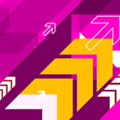
Carousel is free css template provided by for your personal or commercial websites. Quisque nec suscipit ipsum. Fusce vitae accumsan massa.
Nunc vitae purus non augue scelerisque ultricies vitae et velit quis nulla id orci malesua tempus erat.
Rock - CEO, New CompanyCurabitur sed felis urna, quis eleifend magna. Nunc quam mollis sem iaculis sed. Validate XHTML & CSS.
John - Senior Director, CompanyDuis sem nisl, dignissim ac feugiat in, mattis sit amet est. Duis leo leo, suscipit cursus vehicula sit amet. Sed varius pellentesque massa vel rutrum.